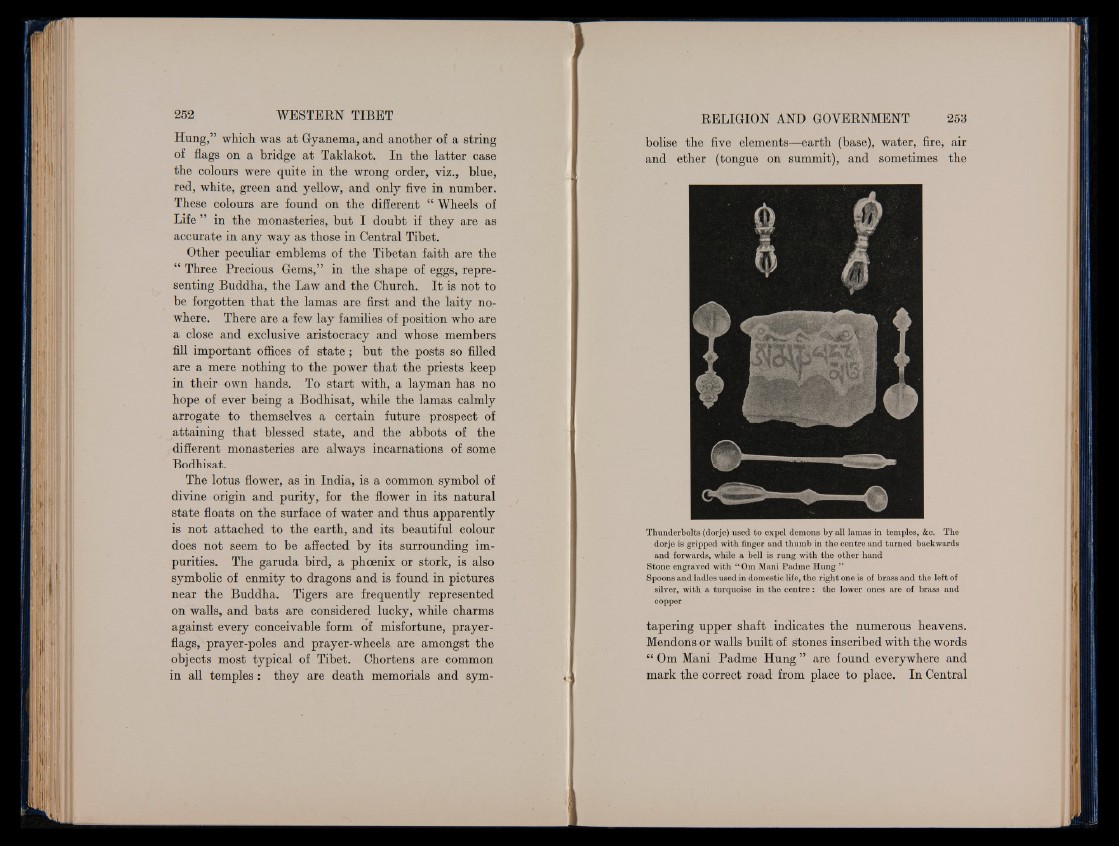
Hung,” which was at Gyanema, and another of a string
of flags on a bridge at Taklakot. In the latter case
the colours were quite in the wrong order, viz., blue,
red, white, green and yellow, and only five in number.
These colours are found on the different “ Wheels of
Life ” in the monasteries, but I doubt if they are as
accurate in any way as those in Central Tibet.
Other peculiar emblems of the Tibetan faith are the
“ Three Precious Gems,” in the shape of eggs, representing
Buddha, the Law and the Church. It is not to
be forgotten that the lamas are first and the laity nowhere.
There are a few lay families of position who are
a close and exclusive aristocracy and whose members
fill important offices of s ta te ; but the posts so filled
are a mere nothing to the power that the priests keep
in their own hands. To start with, a layman has no
hope of ever being a Bodhisat, while the lamas calmly
arrogate to themselves a certain future prospect of
attaining that blessed state, and the abbots of the
different monasteries are always incarnations of some
Bodhisat.
The lotus flower, as in India, is a common symbol of
divine origin and purity, for the flower in its natural
state floats on the surface of water and thus apparently
is not attached to the earth, and its beautiful colour
does not seem to be affected by its surrounding impurities.
The garuda bird, a phoenix or stork, is also
symbolic of enmity to dragons and is found in pictures
near the Buddha. Tigers are frequently represented
on walls, and bats are considered lucky, while charms
against every conceivable form of misfortune, prayer-
flags, prayer-poles and prayer-wheels are amongst the
objects most typical of Tibet. Chortens are common
in all temples: they are death memorials and symbolise
the five elements—earth (base), water, fire, air
and ether (tongue on summit), and sometimes the
Thunderbolts (dorje) used to expel demons by all lamas in temples, &c. The
dor je is gripped with finger and thumb in the centre and turned backwards
and forwards, while a bell is rung with the other hand
Stone engraved with 44 Om Mani Padme Hung ”
Spoons and ladles used in domestic life, the right one is of brass and the left of
silver, with a turquoise in the centre : the lower ones are of brass and
copper
tapering upper shaft indicates the numerous heavens.
Mendons or walls built of stones inscribed with the words
** Om Mani Padme Hung ” are found everywhere and
mark the correct road from place to place. In Central